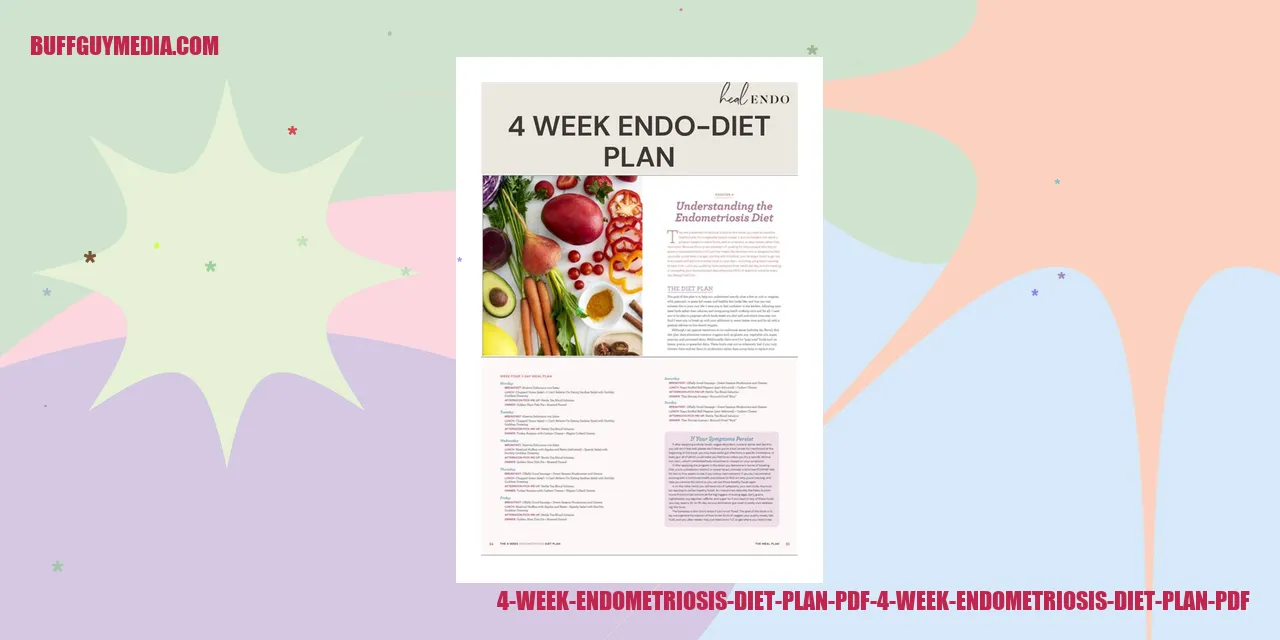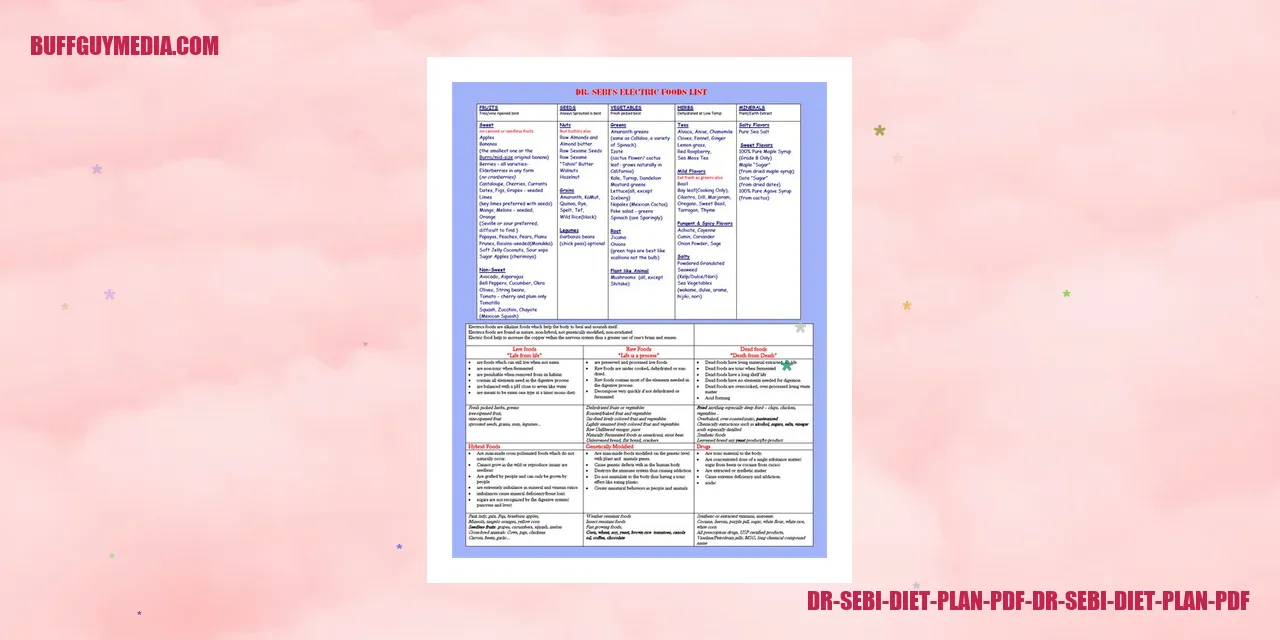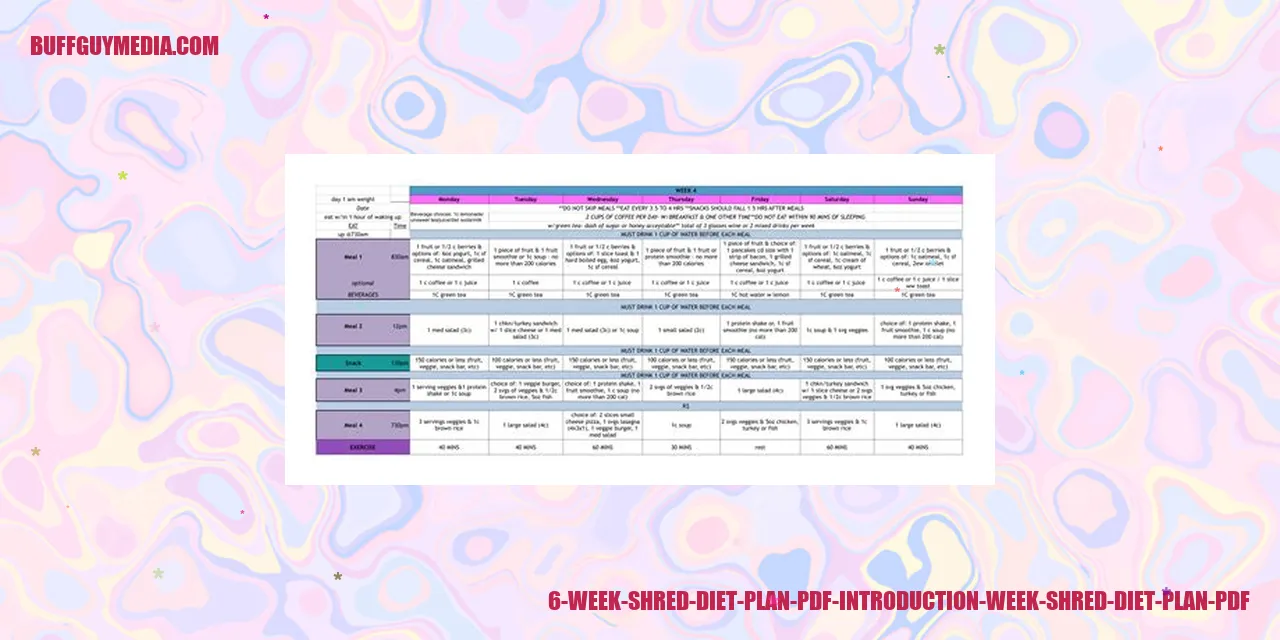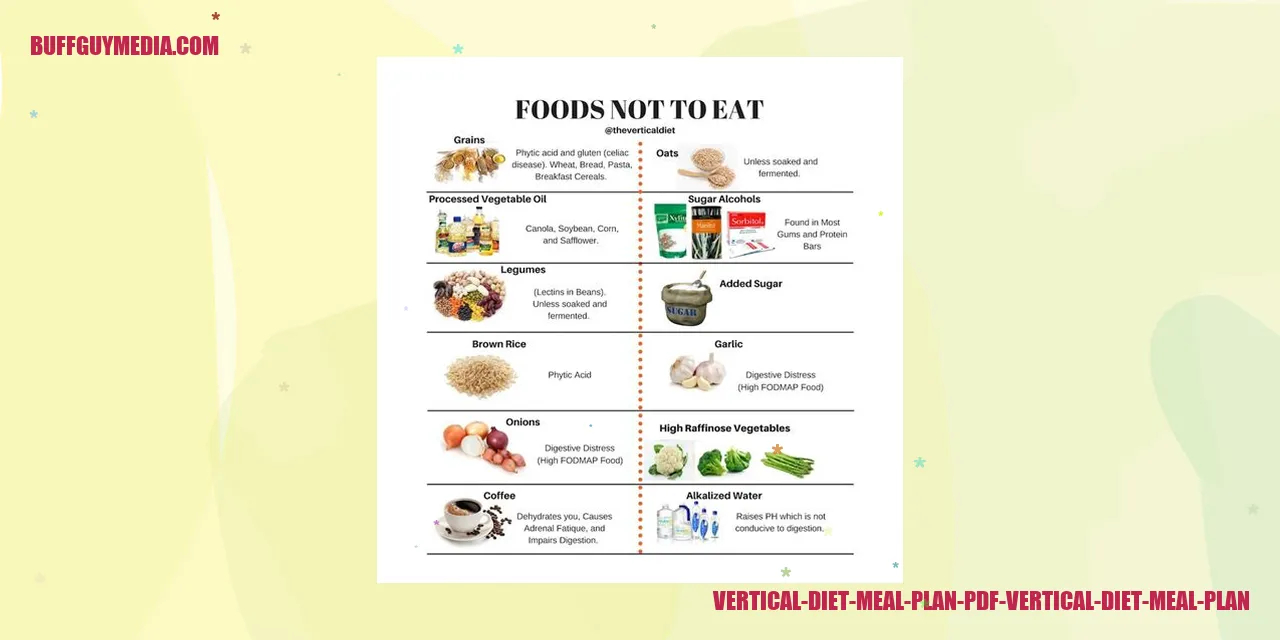4-Week Endometriosis Diet Plan PDF: Improve Symptoms Naturally
The Ultimate Guide to a 4-Week Endometriosis Diet Plan
1 Understanding Endometriosis
Endometriosis is a persistent condition that affects women’s reproductive health. It occurs when the tissue lining the uterus grows outside of it, causing inflammation and chronic pain. This worldwide prevalent condition is known to be a primary cause of infertility. Gaining knowledge about endometriosis is vital for effectively managing its symptoms and achieving overall well-being.
2 Significance of Diet in Managing Endometriosis
Diet plays a crucial role in managing the symptoms associated with endometriosis. Certain food choices can trigger inflammation and intensify pain, while others can alleviate symptoms and promote healing. By making informed dietary decisions, women living with endometriosis can significantly reduce pain, inflammation, and enhance their quality of life.
3 Exploring the Comprehensive 4-Week Endometriosis Diet Plan
The 4-Week Endometriosis Diet Plan offers a detailed roadmap for women to manage their symptoms through nutritious and well-balanced meals. It places emphasis on incorporating foods known to reduce inflammation, strengthen the immune system, and support hormonal balance.
Week 1: The initial week focuses on eliminating trigger foods such as processed sugars, caffeine, and gluten. Instead, it encourages the consumption of anti-inflammatory foods like fatty fish, leafy greens, and nuts.
Week 2: This week emphasizes the inclusion of fiber-rich foods like whole grains, fruits, and vegetables to promote healthy digestion and regulate hormone levels.
Week 3: The third week of the diet plan emphasizes incorporating foods abundant in antioxidants, such as berries, turmeric, and green tea, to decrease inflammation and support the immune system.
Week 4: The final week emphasizes the practice of mindful eating, stress reduction techniques, and incorporating probiotic-rich foods like yogurt and sauerkraut to support the gut’s health.
4 Benefits of Following the 4-Week Endometriosis Diet Plan
By adhering to the 4-Week Endometriosis Diet Plan, women can experience several benefits:
– Reduced inflammation and pain: The diet plan is designed to minimize consumption of foods known to trigger inflammation, thus reducing the pain and discomfort related to endometriosis.
– Restoration of hormonal balance: By focusing on foods that support hormonal balance, the diet plan assists in regulating hormone levels and reducing the severity of hormonal fluctuations that contribute to symptoms.
[[READMORE]]
– Improved digestive health: Including fiber-rich foods in the diet promotes healthy digestion, regularizes bowel movements, and decreases bloating, a common symptom experienced by those with endometriosis.
– Strengthened immune system: The diet plan incorporates foods rich in antioxidants and essential nutrients, which bolster the immune system’s functioning and overall health.
By adopting the 4-Week Endometriosis Diet Plan, women can take control of their symptoms and enhance their quality of life. It is crucial to consult healthcare professionals or registered dietitians before making significant dietary changes.
Also read:
800 Calorie HCG Diet Plan PDF
Grey’s Anatomy Schmitt Weight Gain

Balanced Diet for Endometriosis: Including the Right Foods
1. Implement Anti-inflammatory Foods
Endometriosis is often accompanied by persistent inflammation throughout the body. To alleviate symptoms and promote healing, it is important to incorporate foods with anti-inflammatory properties. Consider adding the following foods to your diet:
- Include fatty fish like salmon, mackerel, and sardines
- Opt for leafy green vegetables like spinach, kale, and Swiss chard
- Introduce colorful fruits and vegetables like berries, cherries, and bell peppers
- Incorporate spices such as turmeric, ginger, and garlic, known for their anti-inflammatory properties
2. Include Nutrient-dense Foods
A well-balanced diet is crucial for managing endometriosis symptoms. Focus on consuming foods rich in essential vitamins and minerals necessary for overall health. Consider incorporating the following nutrient-dense foods into your meals:
- Choose whole grains like quinoa, brown rice, and whole wheat bread
- Opt for lean proteins such as chicken, turkey, tofu, and beans
- Include dairy or dairy alternatives like milk, yogurt, and almond milk fortified with calcium and vitamin D
- Integrate nuts and seeds like almonds, walnuts, chia seeds, and flaxseeds
3. Prioritize Antioxidant-rich Foods
Antioxidants play a vital role in combating oxidative stress and reducing inflammation in the body. Including foods rich in antioxidants can help support the immune system and alleviate endometriosis symptoms. Consider including the following antioxidant-rich foods in your diet:
- Indulge in berries such as blueberries, strawberries, and raspberries
- Opt for dark leafy greens like kale, spinach, and collard greens
- Enjoy a cup of green tea, which contains beneficial catechins and polyphenols
- Savor dark chocolate with a high cocoa content for a delicious antioxidant boost
4. Emphasize Omega-3 Fatty Acid-rich Foods
Omega-3 fatty acids possess anti-inflammatory properties and can aid in reducing pain and inflammation associated with endometriosis. Prioritize foods that are rich in omega-3 fatty acids, including:
- Incorporate fatty fish like salmon, trout, and sardines into your meals
- Sprinkle chia seeds, flaxseeds, and hemp seeds onto your dishes
- Include walnuts and almonds as a snack or in your recipes
- Enjoy the healthy fats found in avocados for a tasty addition to your meals
Remember, while these foods can be beneficial for managing endometriosis symptoms, it is important to consult with a healthcare professional or a registered dietitian for personalized advice based on your specific needs.

Essential Foods to Steer Clear of in the 4-Week Endometriosis Diet Plan PDF
Foods that Trigger Inflammation
Avoiding foods that incite inflammation is crucial in managing the symptoms of endometriosis. This includes steering clear of refined sugars, processed carbohydrates, and unhealthy fats found in fast food and fried snacks. Instead, prioritize incorporating whole foods into your diet that do not contribute to inflammation, such as fresh fruits and vegetables, whole grains, and healthy fats like avocados and nuts.
Processed Foods and Synthetic Ingredients
Highly processed foods often contain excessive amounts of additives, preservatives, and artificial ingredients, which can have a negative impact on endometriosis symptoms. These foods typically lack essential nutrients while being rich in unhealthy fats, sodium, and sugars. Opt for fresh, unprocessed foods instead of packaged snacks, sodas, and processed meats to support your endometriosis diet plan.
Foods with High Estrogen Content
Estrogen levels can affect hormone regulation and intensify the symptoms of endometriosis. Therefore, consuming foods that are naturally high in estrogen may have counterproductive effects. Such foods include soy-based products, flaxseed, tofu, and certain dairy products. By limiting the intake of these foods, it may be possible to manage the symptoms of endometriosis more effectively.
Foods that could Aggravate Endometriosis Symptoms
While individual reactions may vary, there are certain foods commonly reported to worsen the symptoms of endometriosis. These include caffeine, alcohol, red meat, and processed foods with a high saturated fat content. To alleviate discomfort and inflammation caused by endometriosis, it is advisable to avoid or reduce the consumption of these foods in your diet plan.
It is important to consult with a healthcare professional or a registered dietitian who possesses knowledge about endometriosis before making any changes to your diet. They can provide personalized guidance and assist you in developing an individualized meal plan tailored to your specific needs.
Remember, an endometriosis diet plan aims to promote overall well-being and reduce inflammation. By avoiding trigger foods and focusing on nutrient-rich options, individuals with endometriosis may potentially experience relief from their symptoms and enhance their quality of life.
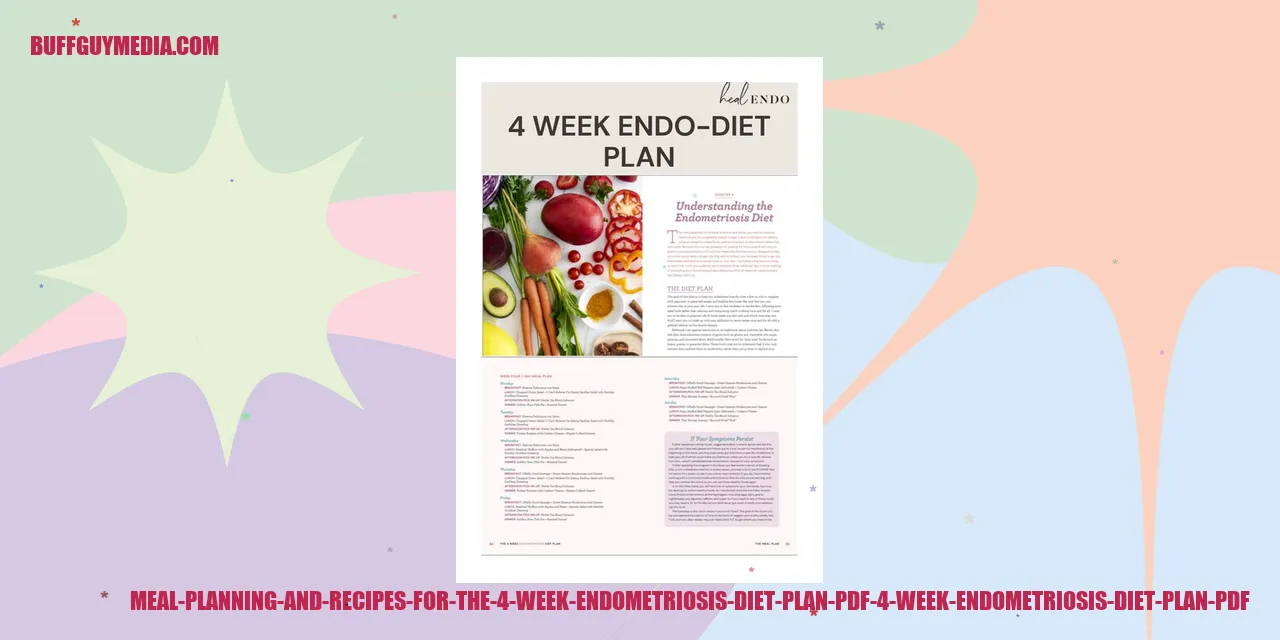
A Comprehensive Guide to Meal Planning and Recipes for the 4-Week Endometriosis Diet Plan PDF
Effective Strategies for Meal Planning
When it comes to following a 4-week endometriosis diet plan, having a well-structured meal plan can be instrumental in achieving your health goals. By incorporating strategic meal planning, you can ensure adequate nutrition and avoid exacerbating symptoms related to endometriosis. Here are some practical tips to assist you in your meal planning endeavors:
- Learn about endometriosis-friendly foods: Familiarize yourself with the foods that are known to alleviate endometriosis symptoms and actively incorporate them into your meal plan.
- Create a weekly menu: Devise a comprehensive meal plan for each day of the week, encompassing breakfast, lunch, dinner, and snacks. This approach will foster discipline and prevent impulsive food choices.
- Embrace nutrient diversity: Ensure that each meal comprises a harmonious blend of macronutrients (carbohydrates, proteins, and fats) as well as a diverse array of essential vitamins and minerals.
- Optimize time management: Consider batch cooking or preparing multiple meals in advance to streamline your daily routine and save valuable time during busy weekdays.
A Sample Meal Plan for Your First Week
To give you a head start, here’s a meticulously crafted sample meal plan for the initial week of your 4-week endometriosis diet plan:
Day 1
- Breakfast: Indulge in a nutritious bowl of overnight oats topped with luscious berries and crunchy almonds.
- Lunch: Savor a delectable quinoa salad brimming with roasted vegetables and grilled chicken.
- Dinner: Relish a scrumptious serving of baked salmon accompanied by perfectly steamed broccoli and quinoa.
- Snack: Recharge your energy with a delightful blend of Greek yogurt and mixed nuts.
Reiterate this pattern throughout the week, ensuring that your meal plan encompasses versatile protein sources, fiber-rich vegetables, and nourishing healthy fats.
Wholesome and Delightful Recipes
Enhance your culinary repertoire with these tantalizing endometriosis-friendly recipes that seamlessly combine the concepts of nutrition and flavor:
Recipe 1: Invigorating Turmeric-Ginger Smoothie
- Ingredients:
- 1 cup unsweetened almond milk
- 1 frozen banana
- 1 tablespoon freshly grated ginger
- 1 teaspoon ground turmeric
- 1 tablespoon honey or maple syrup for natural sweetness
- 2 tablespoons chia seeds for added fiber and omega-3s
- Instructions:
- Combine all the ingredients in a blender and blend until smooth and velvety.
- Enjoy this soothing and anti-inflammatory smoothie as a refreshing snack or a delightful breakfast option.
Additionally, continue to explore a plethora of recipes, such as a delectable spinach and feta quiche, a wholesome Moroccan chickpea stew, and a tantalizing grilled salmon adorned with flavorful avocado salsa. This diverse range of recipes will add variety and zest to your meals.
Endometriosis-Friendly Snack Ideas
While strictly adhering to the 4-week endometriosis diet plan, it is crucial to keep a repertoire of healthy snack options readily available. Consider the following enticing snack ideas:
- Enjoy sliced cucumber with a dollop of creamy hummus.
- Elevate your snacking experience with almond butter and crisp celery sticks.
- Reap the protein-rich benefits of hard-boiled eggs.
- Satisfy your cravings with a delectable trail mix comprising an assortment of nuts and dried fruits.
- Savor the delightful crunchiness of roasted chickpeas as a flavorful snack option.
These nutrient-packed snacks will satiate your hunger pangs in between meals and contribute to your overall well-being.
By integrating these invaluable meal planning tips, following a meticulously developed sample meal plan, experimenting with nutritious recipes, and exploring an array of endometriosis-friendly snacks, you can optimize your dietary choices to effectively support your endometriosis management and improve your overall quality of life.
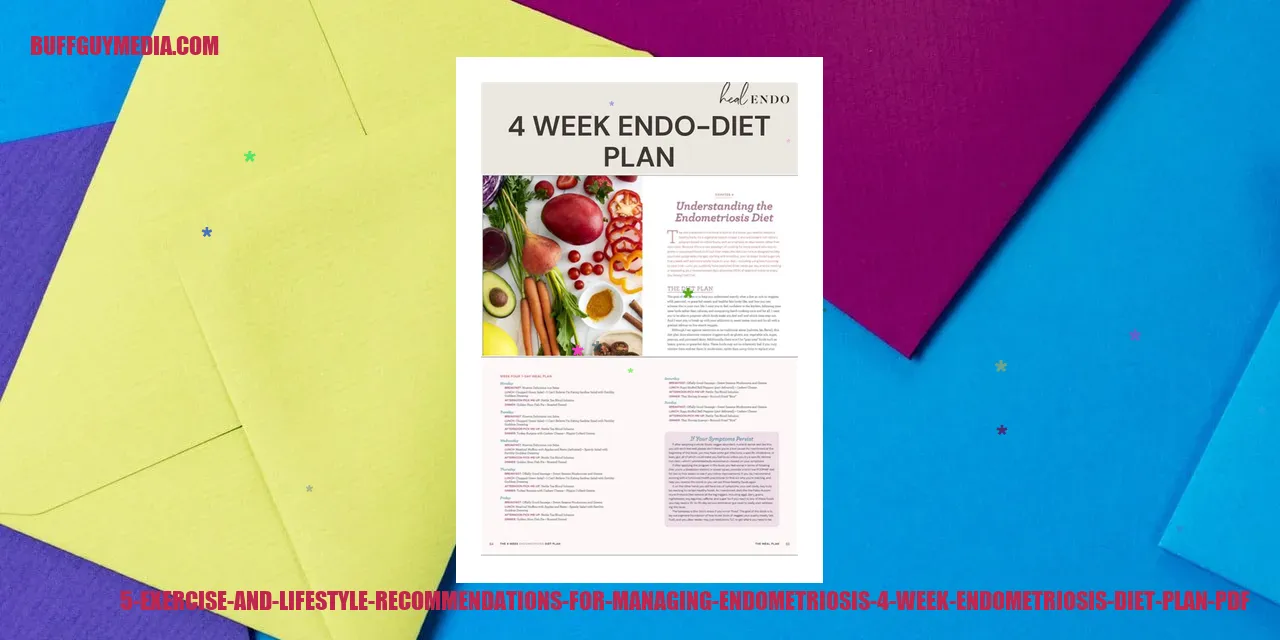
Effective Ways to Manage Endometriosis: Exercise and Lifestyle Recommendations
Understanding the Value of Regular Exercise
Engaging in regular physical activity plays a pivotal role in effectively managing endometriosis. It aids in enhancing blood circulation, reducing inflammation, and alleviating the severity of associated symptoms. Striving for at least 150 minutes of moderate-intensity exercise or 75 minutes of vigorous-intensity exercise on a weekly basis is highly recommended.
Exploring Beneficial Exercise Options for Endometriosis Management
Several exercise routines can significantly benefit individuals dealing with endometriosis. Low-impact activities like walking, swimming, and cycling offer cardiovascular advantages while being gentle on the joints. Strength training exercises, such as yoga and Pilates, improve posture and strengthen core muscles. It is essential to listen to your body and select exercises that don’t exacerbate symptoms.
Adopting Stress Management Techniques
Stress amplifies endometriosis symptoms, making it crucial to incorporate stress management techniques into your daily routine. Deep breathing exercises, meditation, and mindfulness practices aid in reducing stress levels and promoting relaxation. Engaging in hobbies, spending quality time with loved ones, and seeking support from therapists or support groups also contribute to effective stress management.
Cultivating Healthy Sleep Patterns for Endometriosis
Obtaining sufficient restorative sleep is of utmost importance for individuals living with endometriosis. Establishing a consistent sleep schedule, creating an ambiance conducive to sleep, and implementing relaxation techniques before bedtime enhance sleep quality. Avoiding caffeine and electronic devices before retiring for the night further facilitates better sleep. Prioritizing sleep and getting the recommended 7-9 hours of rest each night is crucial.
By adhering to these exercise and lifestyle recommendations, individuals with endometriosis can enhance their overall well-being and effectively manage their symptoms. It is imperative to consult with healthcare professionals before embarking on any new exercise regimen or making significant lifestyle changes.]
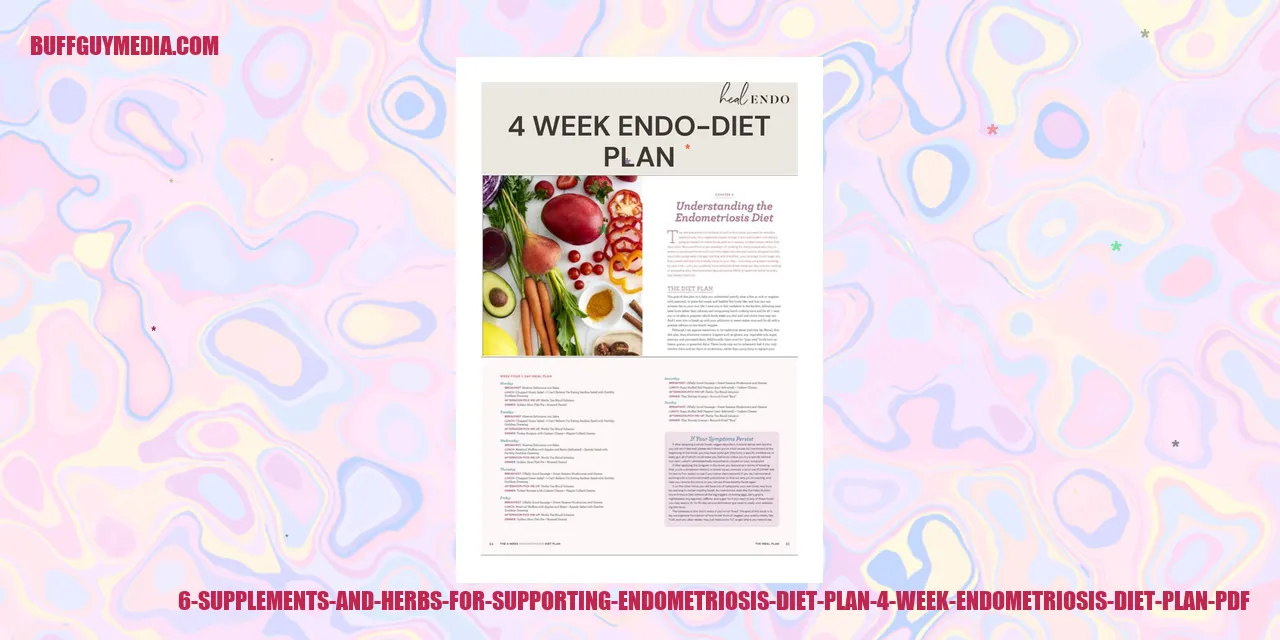
Supporting Endometriosis Diet Plan: Vital Supplements and Herbal Solutions
Essential Supplements for Managing Endometriosis
Endometriosis is a prevalent condition affecting women worldwide and is often accompanied by symptoms such as intense pelvic pain, heavy menstrual bleeding, and difficulties with fertility. Although a complete cure for endometriosis remains elusive, incorporating certain supplements into your diet can help manage symptoms and promote the body’s healing process.
Omega-3 fatty acids, for instance, possess anti-inflammatory properties that alleviate pain and inflammation associated with endometriosis. Moreover, supplements like magnesium, vitamin B6, and vitamin E play vital roles in reducing symptoms and maintaining hormonal balance.
Herbal Solutions for Alleviating Endometriosis Symptoms
Complementing supplementation, herbal remedies have long been used to alleviate endometriosis symptoms. However, it is crucial to consult healthcare professionals before incorporating these remedies into your routine.
Herbs such as chasteberry, renowned for its hormone-regulating effects, turmeric, celebrated for combating inflammation, and green tea, rich in antioxidants that aid in reducing inflammation, can potentially assist in managing endometriosis symptoms.
Potential Interactions and Side Effects
While supplements and herbs can offer relief to endometriosis sufferers, it is imperative to be aware of potential interactions and side effects. Seeking guidance from healthcare professionals or qualified herbalists before embarking on any supplementation and herbal regimen is strongly advised.
Certain supplements may interact with medications or adversely affect specific individuals. For instance, omega-3 fatty acids might heighten the risk of bleeding in individuals taking blood-thinning medications.
Consulting with Experts in Healthcare
When contemplating supplements and herbs for managing endometriosis, it is vital to seek advice from healthcare professionals specializing in reproductive health or integrative medicine. These professionals can evaluate your individual needs, offer tailored guidance, and ensure the safe and effective utilization of supplements and herbal remedies.
In addition, healthcare professionals can monitor your progress and adjust supplement dosages or combinations based on your specific condition, maximizing the chances of a successful outcome.
![]()
Tracking Progress and Modifying the Diet Plan
7.1 Maintaining a Food Journal
An essential tool for monitoring progress and making adjustments to the diet plan is keeping a food journal. By diligently documenting all the food and beverages you consume, you gain valuable insights into your eating habits and how they affect your well-being. It provides an objective overview of your daily intake, enabling identification of any patterns or potential triggers that might impact your condition.
7.2 Observing Symptoms and Changes
To effectively track progress, it is crucial to observe symptoms and changes in your body. The manifestation of endometriosis symptoms can vary from person to person, making it important to pay close attention to how your body responds to the diet plan. Keep track of your energy levels, pain levels, digestion, and any other symptoms you experience on a daily basis to identify improvements or setbacks.
7.3 Recognizing Trigger Foods
Recognizing trigger foods is a vital step in adjusting your diet plan. Certain foods can worsen endometriosis symptoms and may need to be eliminated or limited from your diet. By analyzing your food journal alongside monitoring your symptoms, you can identify specific trigger foods that contribute to your discomfort. Common trigger foods to consider may include processed foods, gluten, dairy, caffeine, and sugar.
7.4 Modifying the Diet Plan as necessary
Based on the information gathered from your food journal and symptom observation, you can make informed adjustments to your diet plan. It is important to collaborate with a healthcare professional or a registered dietitian who specializes in endometriosis to develop a customized diet plan that meets your specific needs. Modifications may involve eliminating trigger foods, incorporating more anti-inflammatory foods, increasing fiber intake, and ensuring a proper balance of essential nutrients.
By diligently tracking progress, monitoring symptoms, identifying trigger foods, and making necessary adjustments to your diet plan, you can optimize endometriosis management and enhance your overall well-being.

Support and Resources for Individuals with Endometriosis
8.1 Joining Support Groups
Support groups offer a safe haven for people living with endometriosis to connect, exchange stories, and receive emotional support. By becoming a part of a support group, individuals can take solace in the knowledge that they are not alone in their journey. These groups often arrange meet-ups, events, and online platforms where members can share information, seek advice, and motivate one another.
8.2 Endometriosis Awareness Organizations
Endometriosis awareness organizations play a vital role in advocating for individuals with this condition. These organizations create awareness about endometriosis through educational campaigns, outreach programs, and public events. They also provide resources like informational brochures, online materials, and helplines to help individuals gain a better understanding of their condition and access essential support and treatment options.
8.3 Online Communities and Forums
Online communities and forums provide a convenient platform for people with endometriosis to connect and engage with others facing similar challenges. These platforms offer a virtual network of support where individuals can share their stories, exchange knowledge, and seek advice from those who have firsthand experience with the condition. Online communities and forums also serve as spaces to discuss treatment options, coping strategies, and lifestyle changes.
8.4 Recommended Books and Websites
There are numerous books and websites dedicated to offering reliable and comprehensive information about endometriosis. These resources often include expert advice, medical research, personal anecdotes, and practical tips for managing the condition. By reading books and visiting trustworthy websites, individuals with endometriosis can empower themselves and make informed decisions about their health and well-being.

Exploring the 4-Week Endometriosis Diet Plan: Frequently Asked Questions (FAQ)
9.1 What is the purpose of the 4-Week Endometriosis Diet Plan?
Understanding the primary aim of the 4-Week Endometriosis Diet Plan
The primary goal of the 4-Week Endometriosis Diet Plan is to provide individuals with a comprehensive and structured dietary approach to effectively manage the distressing symptoms associated with endometriosis. This meticulously designed diet plan focuses on incorporating specific foods and essential nutrients that have shown promising potential in reducing inflammation, balancing hormones, and easing the discomfort and pain experienced by individuals living with endometriosis.
9.2 Can the diet plan cure endometriosis?
Debunking myths and setting realistic expectations for the 4-Week Endometriosis Diet Plan
No, it is important to clarify that the 4-Week Endometriosis Diet Plan is not intended as a cure for endometriosis. Endometriosis is a chronic medical condition that necessitates comprehensive and multifaceted medical management. However, implementing a well-rounded and anti-inflammatory diet such as the 4-Week Endometriosis Diet Plan can significantly contribute to managing symptoms, improving overall well-being, and promoting a healthier lifestyle for individuals living with endometriosis.
9.3 How soon can I expect to see improvements in my symptoms?
Understanding the timeline for potential symptom alleviation through the 4-Week Endometriosis Diet Plan
The timeline for experiencing improvements in endometriosis-related symptoms varies from person to person. While some individuals may notice significant improvements within a few weeks of adhering to the diet plan, others may require a longer duration. It is crucial to emphasize that consistency in following the diet plan is vital, and individual responses may differ based on various factors such as the severity of endometriosis and overall health status.
9.4 Are there any potential side effects of the diet plan?
Exploring the safety and potential considerations of the 4-Week Endometriosis Diet Plan
Generally, the 4-Week Endometriosis Diet Plan is considered safe and well-tolerated. However, it is important to recognize that each individual’s body has its own unique characteristics. Consequently, some individuals may have specific sensitivities or allergies to certain foods included in the diet plan. If you experience any adverse reactions or discomfort, it is advisable to consult with a qualified healthcare professional who can provide appropriate guidance and support.
